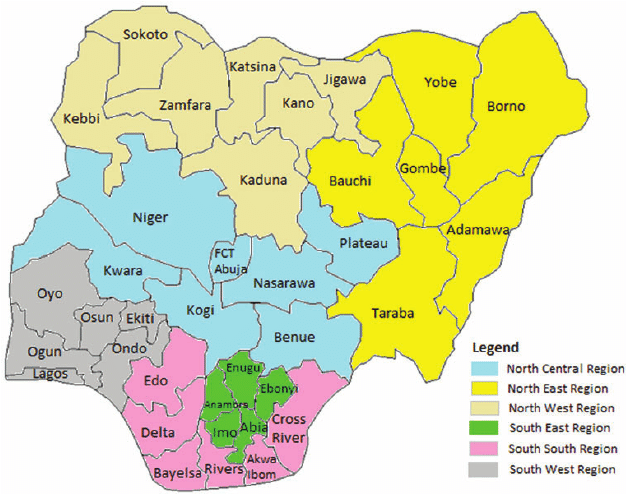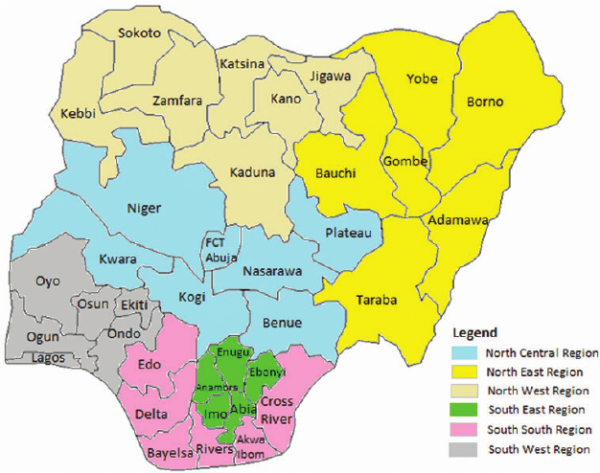After the consolidation of the Southern and Northern Nigeria Protectorates in 1900, the British government, under the administration of the governor, Lord Frederick Lugard, began moves towards linking all of the other territories and protectorates into a single geographical entity named Nigeria.
Economic arguments have held that the reason for bringing the old Nigerian protectorates together as a single entity was more than political. The Northern Nigeria Protectorate had a budget deficit while the Southern Nigeria Protectorate had a budget surplus. For shortsighted reasons particularly, the colonial administration sought to use the budget surpluses in Southern Nigeria to offset this imbalance. Also, administering a single country and unifying all of its ethnic groups seemed easier and the most reasonable for the colonial masters. The British deemed it easier to run a complex nation like Nigeria with a central administration and cared less if it was best for the people.
In January 1914, two sections of the old Nigeria, the Protectorate of Southern Nigeria and the Protectorate of Northern Nigeria, were merged into a single entity called the Colony of Nigeria. The British administration only succeeded in consolidating the Lagos Protectorate and merged it with the Southern Protectorate in 1906, much after the rest of the territories have been consolidated as at January 1900. Nigeria consequently bore the Colony of Nigeria nomenclature until its independence in 1960. It was then renamed the Federal Republic of Nigeria when the country fully attained republic status in 1963.
Ultimately, it was the protest by the Lagos elite which delayed the amalgamation move. Despite the protest by the Colony and Protectorate of Lagos, there was no other effective resistance against this amalgamation move except those by the ethnic kings and chiefs who were either subdued, bribed, bullied or killed, or their kingdoms bombarded, since the British occupation of Nigerian ethnic entities in the 19th century.
The British were evidently calculated and measured in the process of how Nigeria was birthed. The colonization would, however, not last too long as it was cut short by Nigeria’s independence in 1960 with movements championed mainly by a new group of rising political elite of which Obafemi Awolowo, Nnamdi Azikwe and Tafawa Balewa were renown.
Sir Ahmadu Bello and Chief Obafemi Awolowo many years before independence refer to Nigeria as a mere geographical expression. In fact, Ahmadu Bello was said to have once remarked about the amalgamation as “Error 1914”.
The subtle resistance, even before Lugard’s term ended in 1928, neither deterred him nor did the British hesitate in their final plan for colonizing Nigeria. As Governor of the two separate Nigerian colonies since 1912, Lugard, who was noted for being absent from Nigeria for long periods, established several central institutions to anchor the newly unified structure. A central secretariat was instituted at Lagos and the city was also made the seat of government. Certain services (military, treasury, audit, posts and telegraphs, railways, survey, medical services, judicial and legal departments) were also integrated across the Northern and Southern Provinces because of their national significance and they were brought under the control and supervision of the National Secretariat in Lagos. As engineered by Lord Lugard, Nigerians would begin to participate in governance, at the legislative level in 1923, after the Clifford Constitution enabled it.
However it may seem, whether Nigeria is a mere geographical, political or cultural expression 105 years after the amalgamation, her citizens would realize that there is little incentive to split up a union which they never really endorsed in the first place. Like the USA, an ethnically diverse nation with an agglomeration of 50 states which has forged on to be a world superpower, Nigeria can as well find intrinsic beauty in her diversity and differences, and explore unique ways to forge ahead to conquer the future.
Featured image source: ResearchGate


